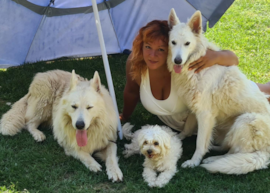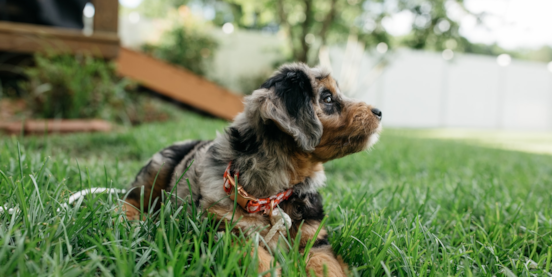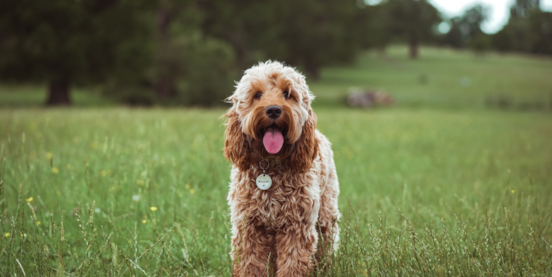Premier Pups > Breed Insights > Mini Labradoodle Size Guide: How Big Do Mini Labradoodles Get?

Published Monday, February 13, 2023 by Elena R.
Mini Labradoodles are a mix between the lovable Labrador Retriever and the famous Mini/Toy Poodle. Because their parent breeds have such different sizes, these beautiful hybrids can be medium-sized, miniature, or toy-sized. It all depends on their genes, generation, and who they take after more in the end.
If you're considering bringing a Mini Labradoodle into your life, one of the questions you're likely wondering is just how big they'll get. Will they fit in your apartment, or will they need their own house? While their name might suggest that they're on the smaller size, there's a lot of variation when it comes to the height and weight of these adorable designer dogs when they reach adulthood.
Whether you're a fan of the breed and are considering getting one for yourself, or you are a newly found owner of a cute mini-Labradoodle, we'll help you get a better sense of what to expect when it comes to the breed’s size and growth. So, let's dive in and learn more about these charming little pups and find out just how big Mini Labradoodles can get.
Table of Contents
Standard Mini Labradoodle Size – F1 Mini Labradoodle
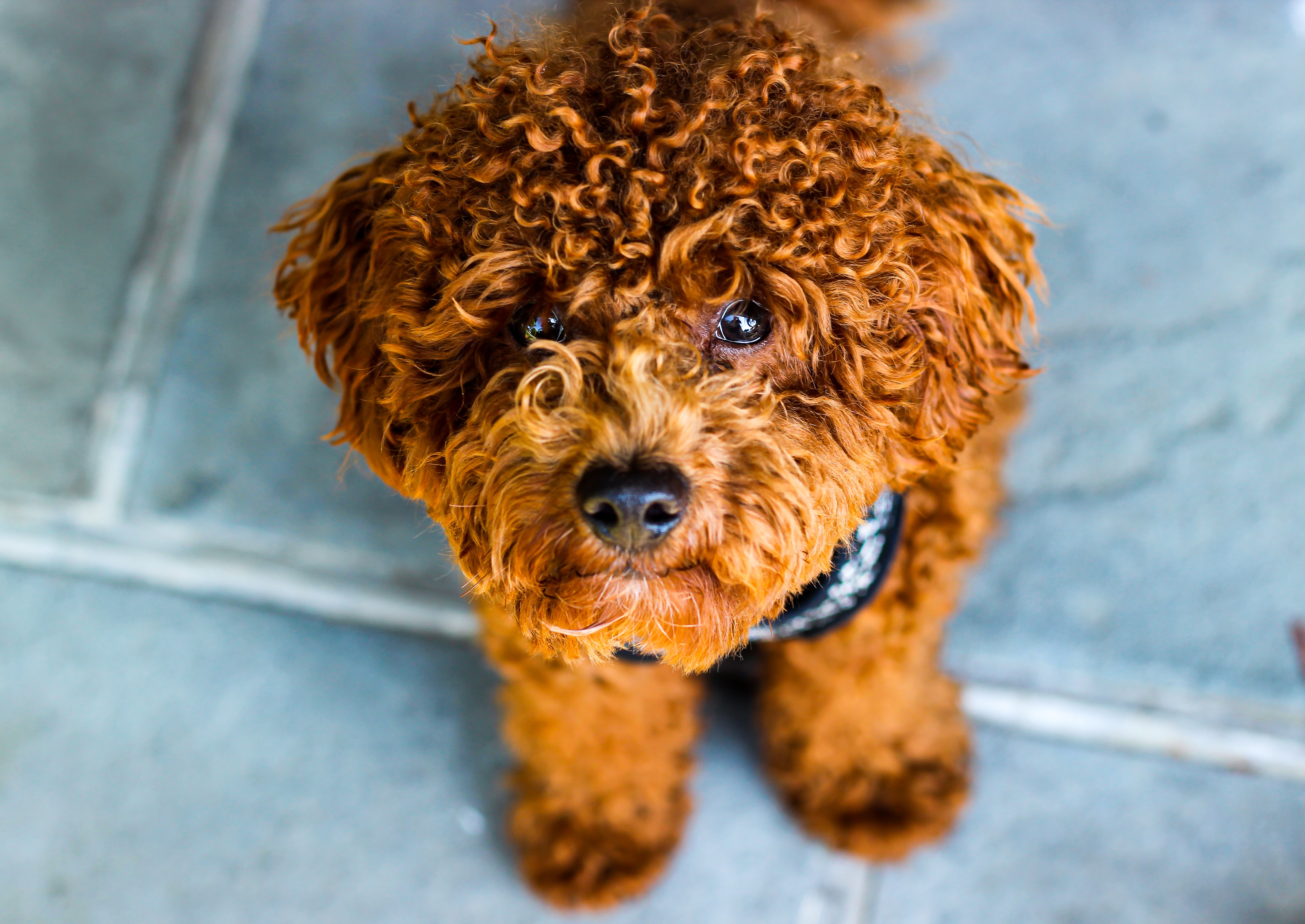
The Standard Mini Labradoodle is a gorgeous hybrid breed that's become increasingly popular in recent years. The standard mini labradoodle (first-generation/F1) is a 50-50 mix between a Miniature Poodle and a Labrador Retriever. While everyone typically knows Labradoodles for their friendly, intelligent nature and low-shedding coats, there's often some confusion surrounding their size, particularly regarding the "mini" variety.
As with any hybrid, the size of dogs of the same breed can vary depending on a number of factors, including genes, generation, diets, and even exercise routines. However, in general, Standard Mini Labradoodles are smaller than their full-sized counterparts but larger than the Toy or Teacup Mini Labradoodle varieties.
A Standard Mini Labradoodle typically weighs between 16 and 30 pounds and stands around 14 to 17 inches tall at the shoulder. However, it's worth knowing that there can be some variation in size within the breed, particularly when it comes to first-generation crosses. Additionally, some breeders may use slightly different criteria to determine what constitutes a "Standard Mini" versus a "Toy" or "Teacup" Mini Labradoodle.
RELATED: How Big Will My Puppy Get?
Toy Mini Labradoodle Size
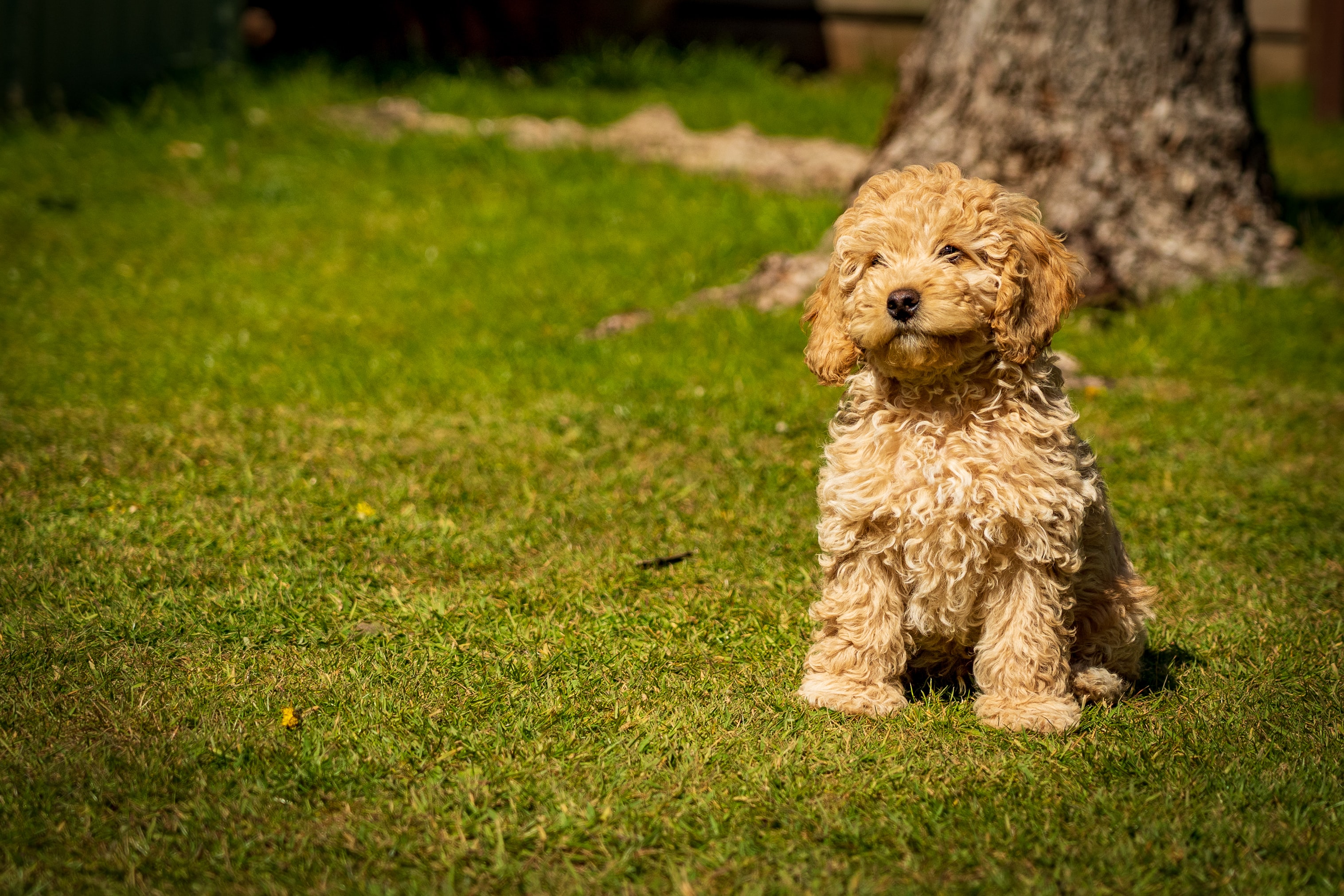
Toy Mini Labradoodles are a smaller variety of the popular hybrid breed. The toy variety is achieved by crossing a Labrador with a Toy Poodle. The size of these adorable toy dogs is given by both parents to a point but is more often dictated by the size of the Poodle parent. In this case, with the Poodle parent being toy-sized, the Toy Mini Labradoodle will be smaller than a Mini Labradoodle that has a Miniature Poodle parent.
In terms of size, Toy Mini Labradoodles typically weigh between 10 and 20 pounds and stand around 14 to 16 inches tall at the shoulder. These compact little dogs are a great choice for owners who are looking for a smaller labradoodle with the same personality and features as a standard-sized one.
RELATED: When Do Puppies Stop Growing?
Teacup Mini Labradoodle Size
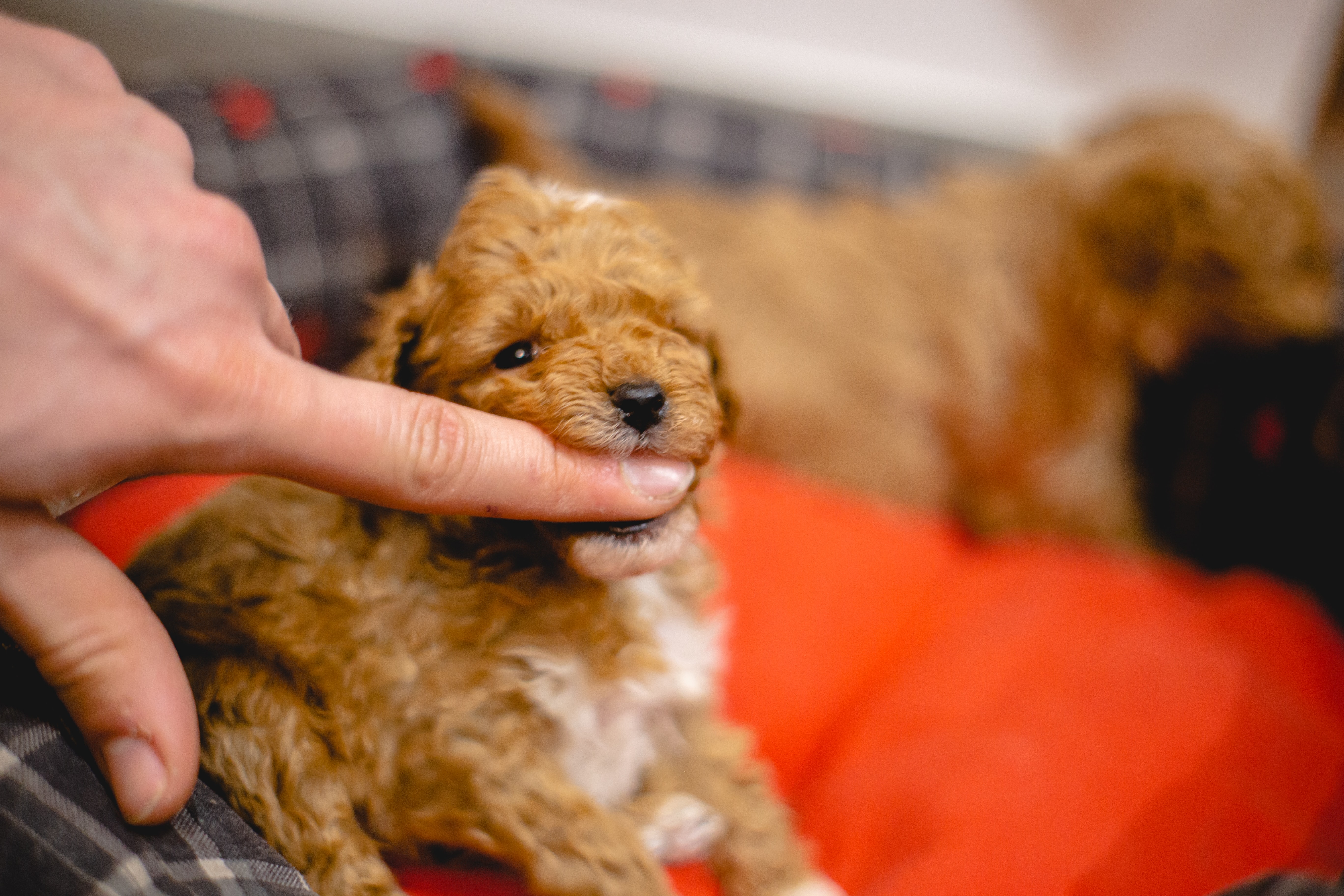
Teacup Mini Labradoodles are the smallest variety of the popular hybrid breed and are known for their tiny size and adorable appearance. The teacup variety is also very rare given how difficult it is to create such a small size in this breed. While their small size can be appealing to some, it's important to note that there are potential health risks and special care requirements that come with owning a Teacup Mini Labradoodle.
In terms of size, Teacup Mini Labradoodles typically weigh less than 10 pounds and stand around 10 to 14 inches tall at the shoulder.
F1b Mini Labradoodle Size
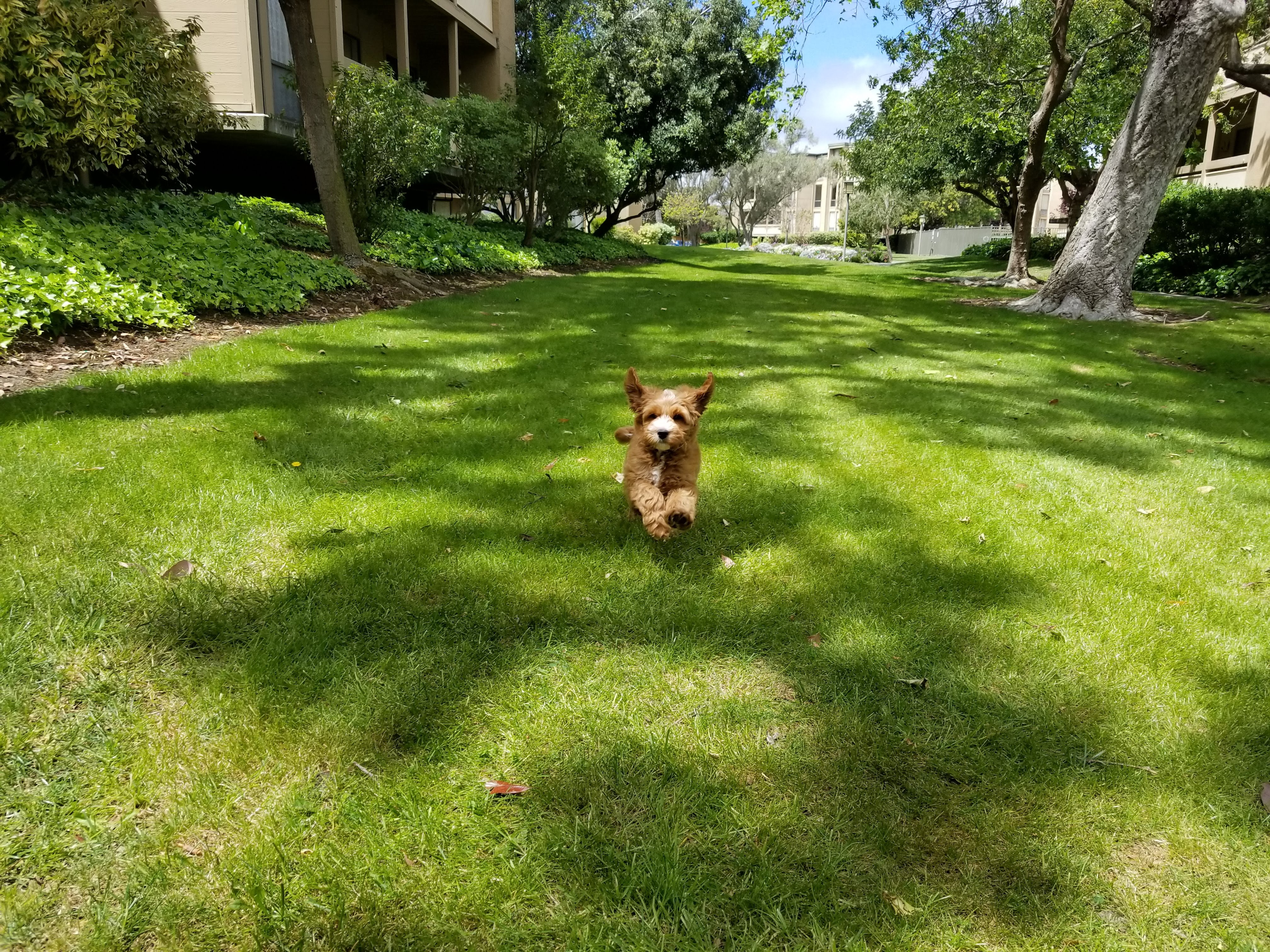
Unlike first-generation Mini Labradoodles, which are the result of breeding a Miniature Poodle and a Labrador Retriever, F1b Mini Labradoodles are the offspring of a Mini Labradoodle and a Miniature or Toy Poodle. This means that they have a higher likelihood of inheriting the non-shedding coat and hypoallergenic qualities of the Poodle parent along with their smaller size.
F1b Mini Labradoodle size can vary depending on the size of their parents. More often than not, F1b Mini Labradoodles tend to be smaller than their first-generation counterparts. They typically weigh between 15 and 25 pounds and stand around 14 to 16 inches tall at the shoulder.
RELATED: What is the Difference between F1, F1B, and F2 Mixed Breed Generations?
How To Predict Your Mini Labradoodle’s Size

Predicting the size of a Mini Labradoodle can be quite tricky since there are a number of factors that can impact its growth and development. However, there are a few things that you can try to help you estimate your Mini Labradoodle's adult size.
- Look at the parent breeds: One of the most important factors in predicting your Mini Labradoodle's size is the size of their parent breeds used in the mix. Labradors typically weigh between 55 and 80 pounds, while Toy and Miniature Poodles generally weigh between 10 and 15 pounds. If your Mini Labradoodle has a Labrador parent, they may end up being larger than if they had a Miniature Poodle or a Mini Labradoodle parent.
- Consider the generation: The generation of your Mini Labradoodle can also impact their size. First-generation Mini Labradoodles are the result of breeding a Labrador Retriever with a Miniature or Toy Poodle and can vary in size, while second-generation (F1B) and beyond (f2, F2b, etc.) may be more predictable in size since they are bred from Mini Labradoodles and Poodles of a specific size.
- Monitor their growth: Keep track of your Mini Labradoodle's weight and height as they grow and compare it to the average size range for their age and gender. This can help you estimate how much larger they may grow in the future.
- Consider their diet and exercise: Proper nutrition and exercise are important for your Mini Labradoodle's overall health, but they can also impact their growth and development. Be sure to feed your Mini Labradoodle a well-balanced diet appropriate for their age and size and provide plenty of opportunities for exercise.
While predicting your Mini Labradoodle's size isn't an exact science, considering these factors can help you get a general idea of how large your furry friend may eventually become as an adult. Remember, every Mini Labradoodle is unique and will develop at their own pace, so be patient and enjoy watching them grow into the perfect size for your family.
RELATED: See Available Mini Labradoodle Puppies for Sale
Conclusion
Mini Labradoodles are a beautiful hybrid breed that offers a combination of Labrador Retriever and Poodle traits in a smaller, more manageable package. Whether they are standard mini, toy, or the rare teacup variety, these dogs fit wonderfully in any setting. They thrive in both large and small homes and make fantastic little companion pets for any dog lover.
Scroll down to see FAQs about Mini Labradoodle size!
What To Read Next
Doodle Dogs Explained – Part 2
In Part 1 of Doodle Breeds Explained, we discussed what Doodle Breeds are and why they are as popular as they are. We also answered a few questions about the Cockapoo, Cavapoo, Havapoo, and Maltipoo breeds. Now, it’s time to talk about the world’s favorite... Read More
What is the Difference between F1, F1B and F2 Mixed Breed Generations?
Since their first paw-steps into the world, Designer-mixed Breeds have conquered the canine popularity charts with their unique appearance, fantastic personalities, and hypoallergenic qualities. Designer Breeds come in all shapes and sizes, personality types, and... Read More
Frequently Asked Questions
Do Mini Labradoodles stay small? Mini Labradoodles are generally smaller than standard-sized Labradoodles, but whether they stay small or not depends on various factors such as genetics, crossbreed generation, parents, and overall lifestyle.
How big is a Mini Labradoodle at 8 weeks? At 8 weeks old, Mini Labradoodle puppies typically weigh between 5 and 10 pounds and stand around 7 to 10 inches tall at the shoulder.
How small can a Labradoodle be? Standard-sized Labradoodles can range in weight from 50 to 90 pounds and stand around 22 to 24 inches tall at the shoulder. However, Miniature Poodle and Toy Poodle crosses can result in smaller versions of the Labradoodle breed, including Mini Labradoodles and Toy Labradoodles. Mini Labradoodles can weigh between 15 and 35 pounds and stand around 14 to 16 inches tall at the shoulder, while Toy Labradoodles can weigh less than 15 pounds and stand around 10 to 12 inches tall at the shoulder.
When does Mini Labradoodle stop growing? Mini Labradoodles typically stop growing by the time they reach 12-18 months of age.


